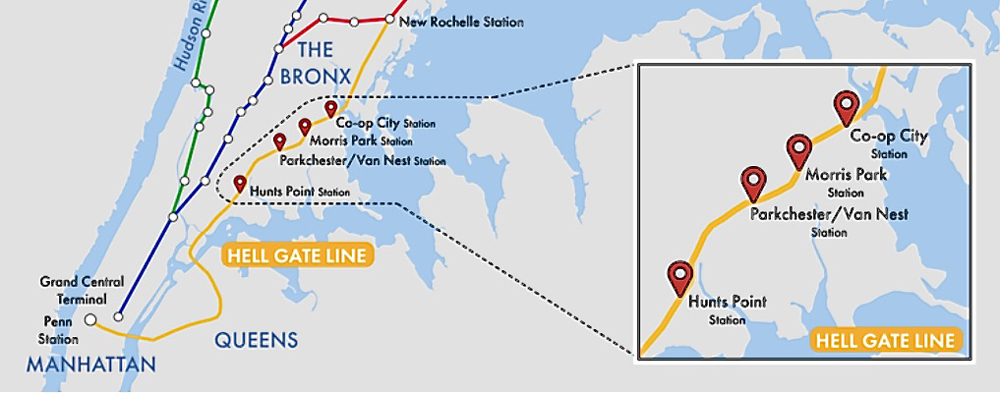
NEW YORK — Completion of the Metropolitan Transportation Authority’s Penn Access project, which will bring Metro-North trains to Penn Station and add four new stations in the Bronx, will likely be pushed back by three years to 2030 because of Amtrak’s failure to meet its obligations to the project, MTA executives said at a meeting of the MTA board’s Capital Program Committee today (Monday, Oct. 27).
However, the agency has a plan that would still provide limited service to three stations in 2027, the original target date, if Amtrak agrees to its proposals.
The Penn Access project involves rebuilding infrastructure and adding new tracks and stations along Amtrak’s Hell Gate line between Queens and New Rochelle. While the MTA is doing that construction work, it requires significant support from Amtrak. MTA CEO Janno Lieber recently voiced his unhappiness over a lack of that support, although Amtrak disputed his comments [see “MTA CEO blasts Amtrak …,” Trains.com, Oct. 6, 2025].
At today’s meeting, Jamie Torres-Springer, president of MTA Construction & Development, detailed problems involving windows, or outages, needed for work, and the Amtrak support personnel required to oversee that work, since the project is on Amtrak’s property.
“Amtrak was unable to provide outages,” Torres-Springer said. “You need outages to get work done, weekend outages, and I don’t think this is in dispute: … of the 48 outages committed to on paper in an agreement between Amtrak and the MTA, only seven were provided in the first two years.”
Later, he said, Amtrak provided more outages, but not the necessary staff: “Amtrak foremen didn’t show 98 days from March 2023 until August 2025. Without a foreman, you can’t take track out. You can’t work on the track.” There were also 77 days, he said, when electrical personnel were not on hand to shut off the catenary in work areas.
“So imagine night after night with outages,” Torres-Springer said, “which means that Amtrak has disrupted its own service, our contractor sending out its forces ready to work, and no one is there to allow them to work on track or work on power.”
Eventually, Torres-Springer said, both issues improved. “They have improved on their workforce supply considerably by doing a lot of hiring over the last few years,” he said. “I give them a lot of credit for that, but it hasn’t made much of a difference because of delays to date and because the arcane work rules and the bureaucracy have prevented us from making progress.”
Lieber told the board members the MTA was detailing the issues “so that that world understands what’s taking place.” He drew a comparison with the East Side Access project, which brought the Long Island Rail Road to a station beneath Grand Central Terminal years late and billions of dollars over budget. On that project, he said, MTA had problems with Amtrak at Harold Interlocking in Queens .
“I’m not blaming Amtrak for the entire East Side Access debacle,” Lieber said. “I got to drag it over the finish line when it was already 10 years old. [But] Amtrak’s problems, which are exactly the same type of problems we’re talking about here, had a significant impact. There was never really airing of it until very late in the game. What we’re trying to do is say, this is what happened and we need to find a route to deliver service before it starts to drag out like East Side Access.”
The MTA does not yet have an estimate how the delays will affect the cost of the project, originally budgeted at $2.87 billion.
Temporary service plan
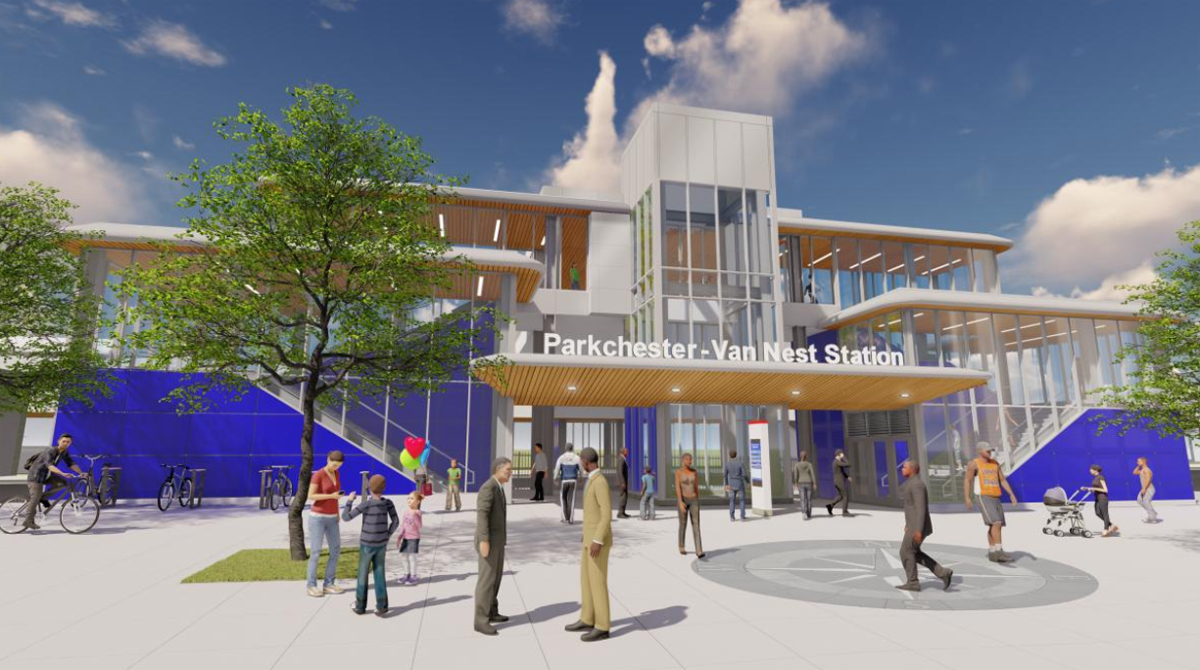
At least initially, the MTA officials said that service could be provided with 31 trains a day serving the Parkchester/Van Nest station and temporary stations at the Co-Op City and Morris Park sites. (The fourth new Bronx station, at Hunts Point, will be in a location that can’t accommodate a temporary facility and still allow for construction, Torres-Springer said.) This would be done on the route’s existing two tracks, since the additional tracks the MTA plans to build — which would allow up to 105 Metro-North trains per day — will be delayed.
“Currently, Amtrak runs at most four trains an hour on the Hell Gate Line, two in either direction,” said Metro-North President Justin Vonashek. “What we’re proposing adds an additional three trains per hour in the peak periods and two per hour throughout most of the day. That brings the maximum total to seven trains per hour on a two-track railroad, a very reasonable number.”
Torres-Springer said that, in an effort to move the project along, the MTA is scaling back some of its planned construction, and has changed its operational plans. It now plans to use trainsets powered by the battery-electric locomotives the MTA has on order, rather than electric multiple-unit trainsets. “The battery locomotives mean that we don’t have to build third rail and two [electrical] substations,” he said.
However, that plan — like the effort to complete the entire project — will require agreements with Amtrak: to allow additional trains on its line in the short term, and on methods to speed up the project overall.
“No. 1 is cooperation to reach that 2030 date,” Torres-Springer said. “… It involves some fairly basic compromises: Letting us work on a larger portion of territory at a time. Find efficiencies in how the work is performed. Give us work rules that actually allow us to get work done. And since Amtrak forces are more comfortable putting up their own catenary power and signal lines, we’re happy for Amtrak to take over that work.”
It appears at least some of that work may indeed be handled by Amtrak. In a statement released Tuesday, Amtrak said it remains committed to the project “and being good stewards of taxpayer investment for Amtrak, MTA customers, New York residents, and travelers.”
The company said it was collaborating with the MTA on mitigation strategies including:
— More 55-hour outages and three long-term outages on both weekdays and weekends to give MTA’s contractor more time to work;
— Providing 190% of the previously committed Amtrak workforce to provide protection where needed;
— Changing its rules for worker protection to allow more work to be done;
— Modifying schedules and in some cases temporarily suspending Amtrak trains to permit more work.
— Taking over a portion of the work that was originally to have been done by the MTA’s contractor.
Amtrak also said it had “invested over $140 million and significant staff resources” on the project, and that the MTA had not made it aware of an independent review of the project presented at the MTA meeting and was not involved in that analysis.
— Updated Oct. 28 at 7 a.m. ET to add note on cost estimate; updated Oct. 29 at 7:25 a.m. with Amtrak statement.






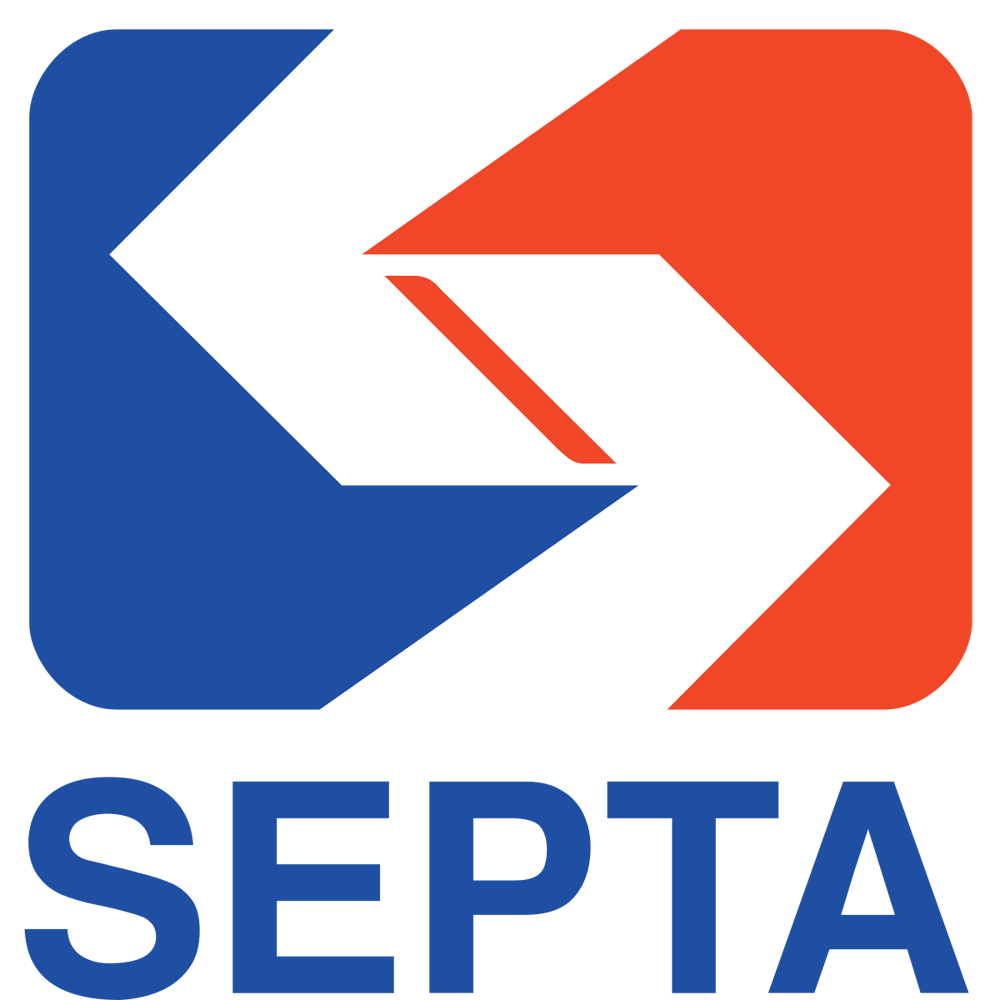
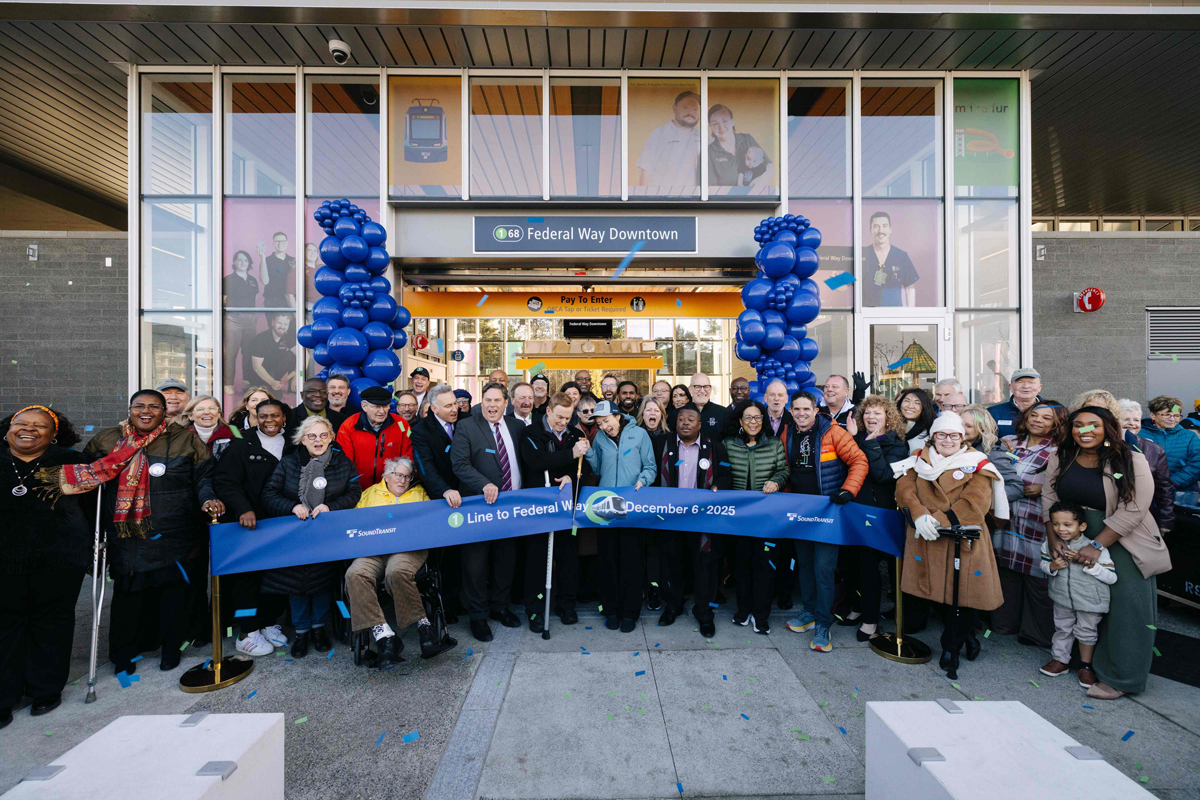
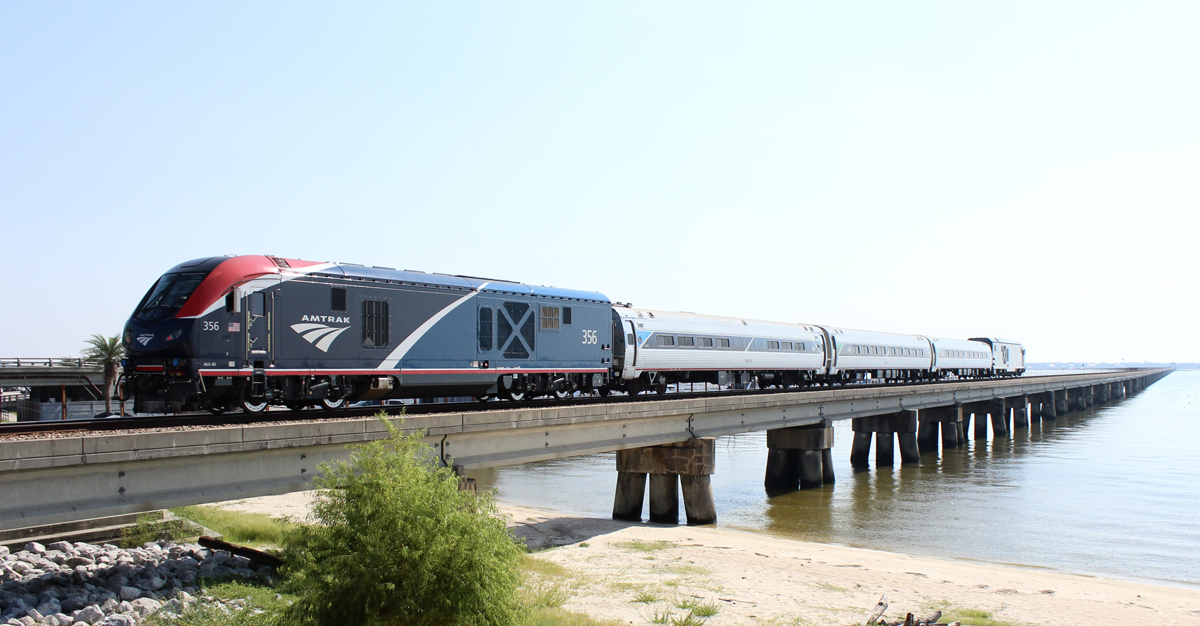
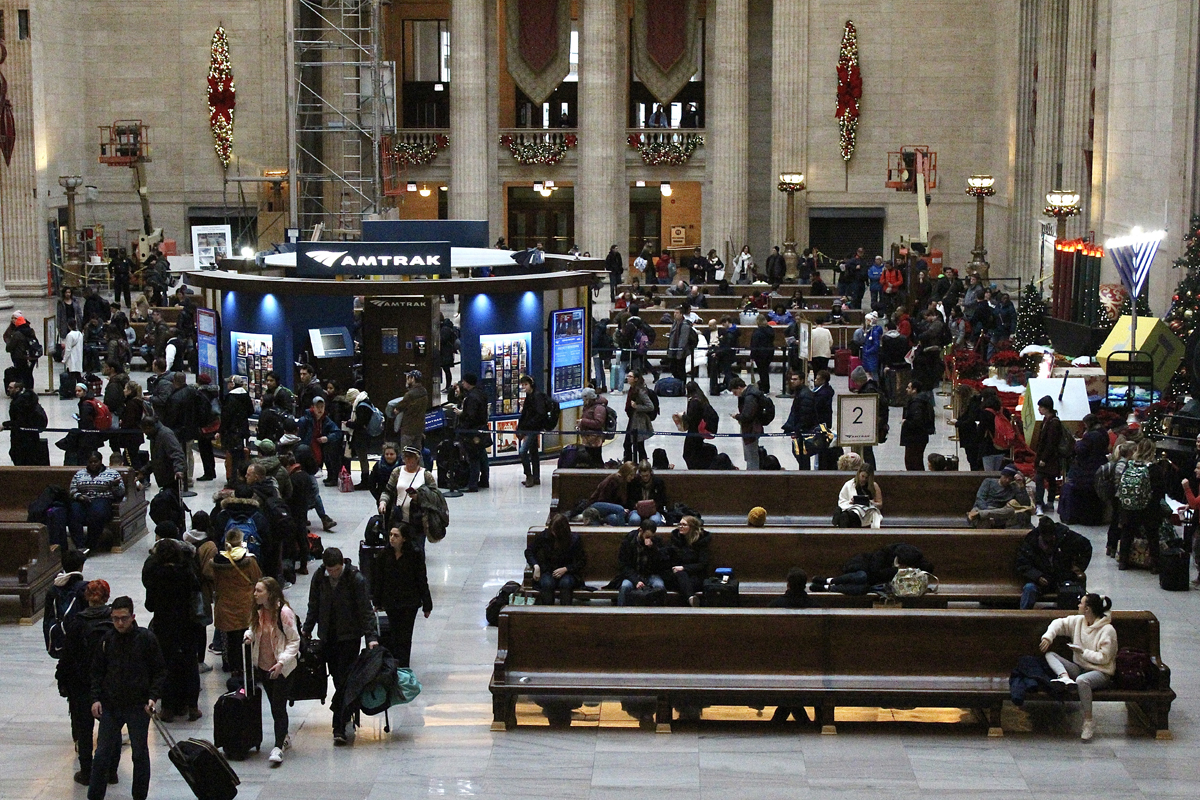
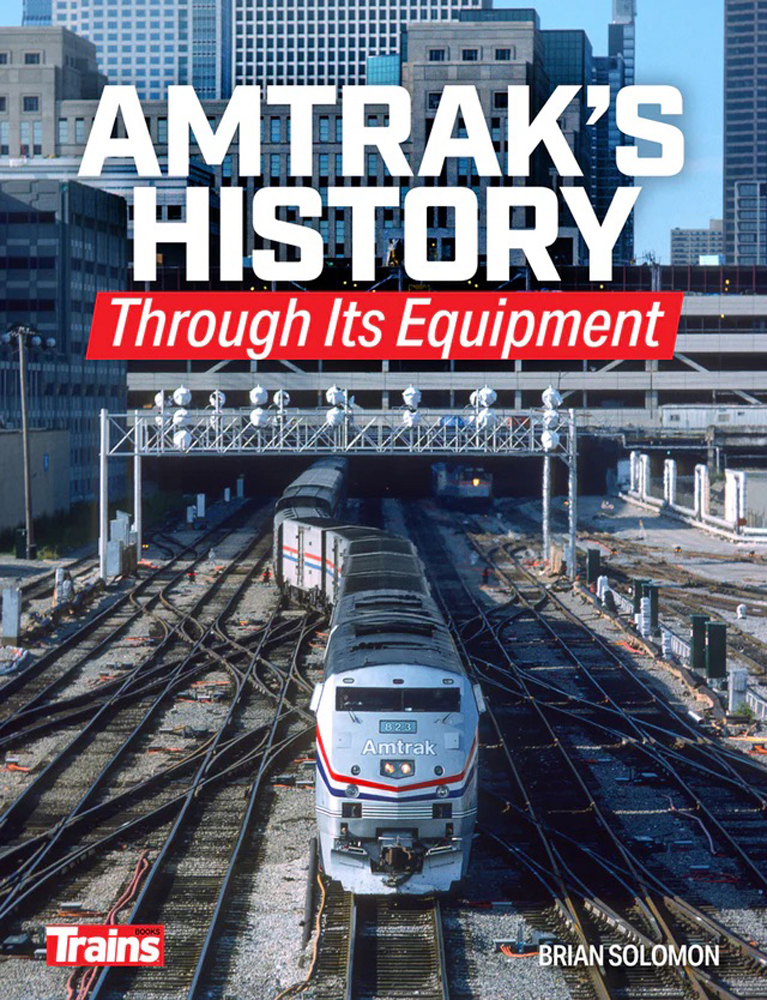


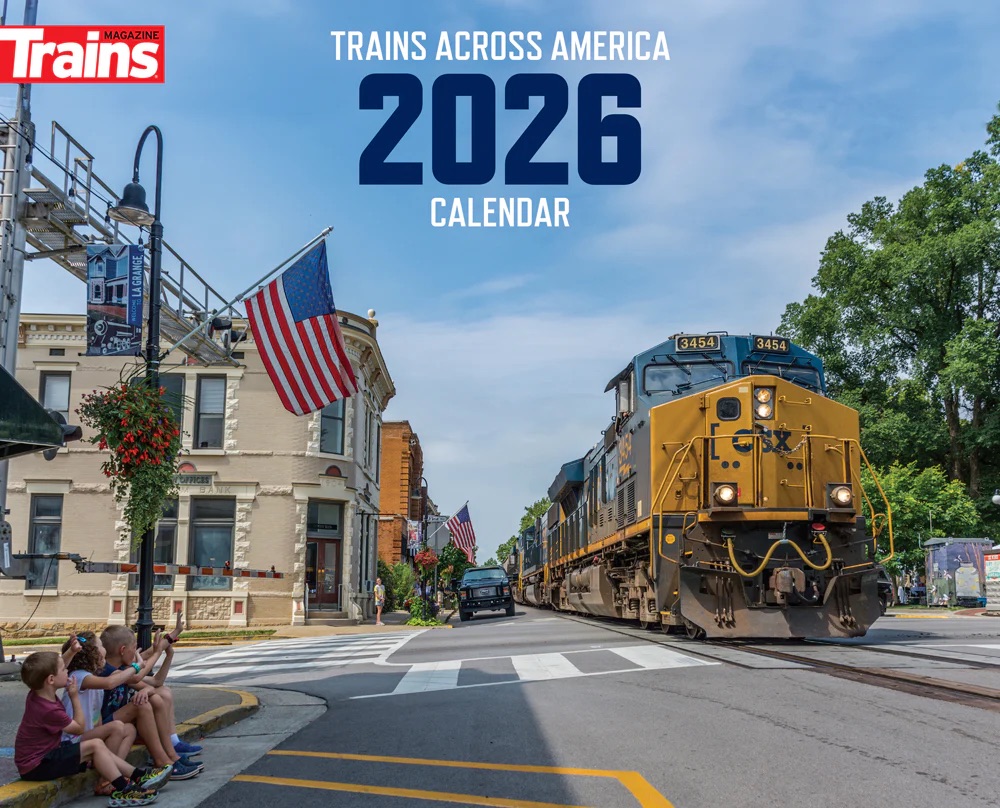
The howler in this fiasco is that the 2 tracks amtrak removed back when are to be put back in. I enjoy standing on the costco terrace at 117th st marveling at the Pennsy’s audacious Hellgate engineering. And BTW amtrak is the one and only cause for the delay. All the NY press has had extensive coverage.
Curtis – as always I appreciate your input. Let’s look at another “howler”. Going further up NEC, Boston Back Bay to Providence, is two tracks, for all of Amtrak NEC, occasional freights (I assume at night) Mansfield to Attleboro, and frequent MBTA trains. (Within Boston, about three different MBTA lines, only the Providence Line trains outside of Boston.) MBTA being diesel (under wires) meaning slower acceleration from the frequent stops. Somehow this works on two tracks but there wouldn’t seem to be much margin to spare. Sharon to Attleboro being real fast for Amtrak, not so much for MBTA. Probably was easier in New Haven Railroad days because the top speed for the New York/ Washington trains being slower than today’s Amtrak NEC.
Got to have some sympathy for East Bronx, with the Second Avenue Subway dragging on for decade after decade (or century after century) and now this looming fiasco on the Hell Gate access project.
TRAINS Magazine has four of the best journalists around — Brian Solomon, Bob Johnston, Bill Stephens and David Lassen. It would be helpful if one of these columnists would sort through the “he said – she said” (Amtrak vs. MTA) and tell us what’s really going on here.
What’s at stake here is if the project even gets built. New Yorkers must know that all these projects are in grave danger, with hostility from the federal government, coupled with soaring construction costs, coupled with stagnant ridership.
East Bronx is the canary in the coal mine. In the greater scheme of things, East Bronx isn’t the most important project in the Northeast. Far more is at stake with Gateway and Baltimore’s Frederick Douglass tunnel.
We appreciate Landey’s comment’s; he obviously knows metropolitan New York’s transportation picture well. We’d add
one detail: Nothing against Solomon, Johnston, and Stephens, but we suggest Lassen for in-depth coverage. He also knows NYC transportation very well.
CHUCK — I do know NYC. My undergrad college was in Manhattan, travelling from Massachusetts by New Haven Railroad, or Eastern, Northeast or American Airlines. We had some (not a lot) family in different boroughs including central Bronx. Our most recent journey to NYC was to Throgs Neck, East Bronx. Unfortunately by car (driving in all five boroughs OMG in heaven !!!!) due to the lack of a transit option. In a stick-shift car, clutching in and out for seeming hours.
More than my local experience, though, is what is published in TRAINS MAGAZINE.